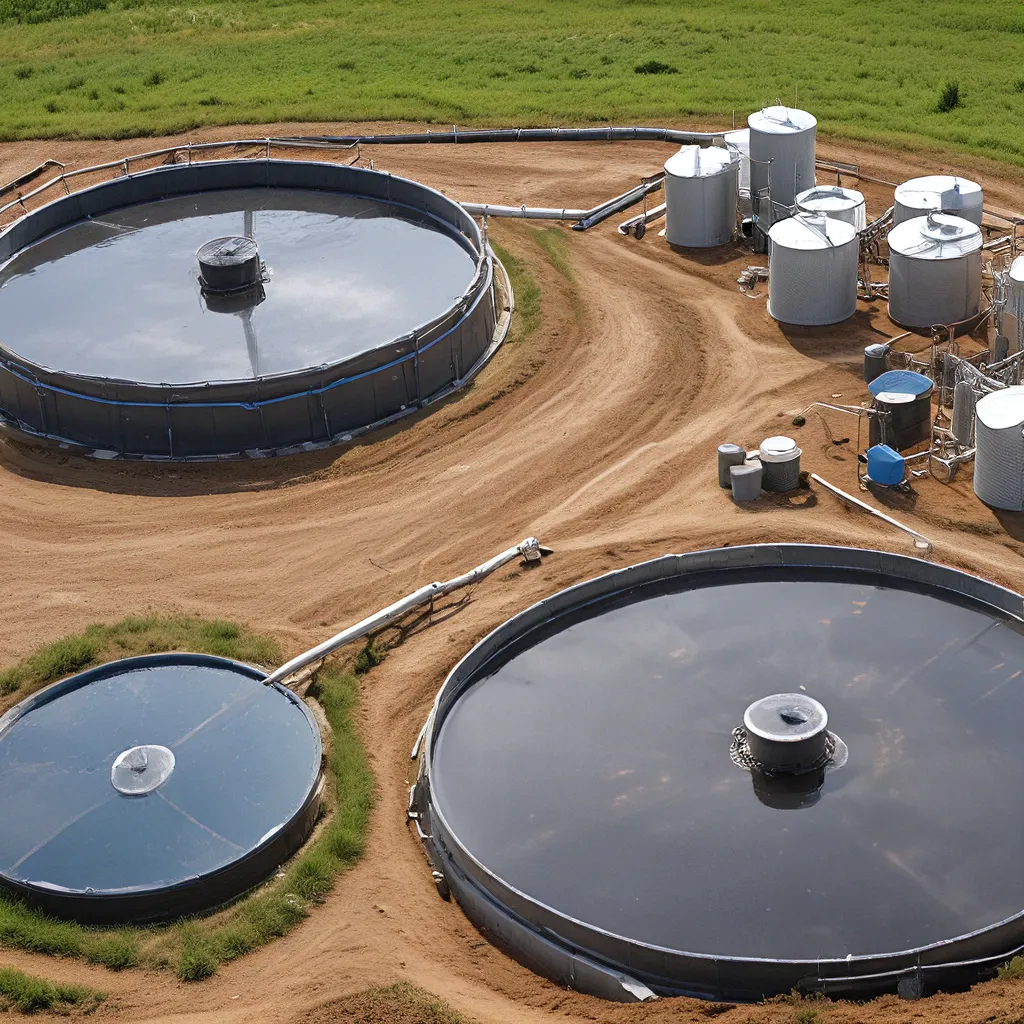
As someone who’s passionate about sustainability and innovative solutions, I’ve been fascinated by the untapped potential of biogas generation from wastewater treatment. It’s a remarkable process that not only addresses environmental challenges but also creates new opportunities for cost-savings and renewable energy production. Let me take you on a journey to explore this remarkable technology and how it’s transforming the way we manage our waste.
Turning Waste into Wealth: The Power of Anaerobic Digestion
At the heart of biogas generation lies a process called anaerobic digestion. This process involves breaking down organic materials, like plant and animal products, in an oxygen-free environment using specialized bacteria. The result? A versatile fuel called biogas that contains a high concentration of methane.
But biogas is more than just a byproduct – it’s a treasure trove of possibilities. Imagine being able to harness this renewable energy source to power your facilities, heat your buildings, or even fuel your vehicle fleet. It’s a win-win situation where we can turn the cost of waste management into a revenue-generating opportunity.
Unlocking the Potential: Biogas Systems in Action
One of the most exciting aspects of biogas generation is the diversity of feedstocks that can be used. Food waste, fats, oils, and greases are among the easiest organic materials to break down, while livestock waste and crop residues can also be effectively harnessed. By co-digesting these various waste streams, we can optimize the biogas yield and create a truly circular economy.
According to the Environmental and Energy Study Institute (EESI), the United States currently has over 2,200 operating biogas systems, with the potential to add an additional 13,500 new systems. These systems have the power to generate over 13 million megawatt-hours of energy each year, which is enough to power hundreds of thousands of homes.
Revolutionizing Waste Management: The Environmental Benefits
The environmental benefits of biogas generation are nothing short of remarkable. By capturing and utilizing the methane that would otherwise be released into the atmosphere, we can significantly reduce greenhouse gas emissions. In fact, the EESI estimates that the reduction in methane emissions from tapping into the full potential of biogas in the United States would be equivalent to the annual emissions of 800,000 to 11 million passenger vehicles.
But the positive impact extends beyond just greenhouse gas reductions. Biogas systems also reduce odors, pathogens, and the risk of water pollution from livestock waste. And the nutrient-rich digestate remaining after the digestion process can be used as a soil amendment or livestock bedding, reducing the need for synthetic fertilizers.
Unlocking New Revenue Streams: The Economic Benefits
The economic benefits of biogas generation are just as impressive as the environmental ones. By diverting waste from landfills and incinerators, we can turn a cost into an opportunity, generating revenue from energy production and co-products. The EESI estimates that building the 13,500 potential biogas systems in the United States could add over 335,000 temporary construction jobs and 23,000 permanent jobs.
But the savings don’t stop there. Biogas can be upgraded to renewable natural gas (RNG) and injected into the natural gas grid, providing a clean, renewable, and reliable source of energy. RNG can also be used as a vehicle fuel, reducing our dependence on fossil fuels and contributing to a more sustainable transportation system.
Navigating the Policy Landscape: Incentives and Challenges
The growth of the biogas industry has been supported by a variety of policy initiatives, including the Renewable Fuel Standard (RFS) and programs under the Farm Bill’s Energy Title IX. These programs have provided crucial funding for research, development, and the implementation of biogas systems.
However, the EESI notes that these programs have consistently seen reductions in funding through the appropriations process, which can hamper the industry’s ability to reach its full potential. Ongoing policy support and consistent funding will be crucial to encourage further investment and innovation in the biogas sector.
The Future of Biogas: Endless Possibilities
As I delve deeper into the world of biogas generation, I’m struck by the endless possibilities it holds. Imagine a future where wastewater treatment plants are not just responsible for cleaning our water, but also producing clean, renewable energy to power our communities. Or a world where farms and dairies are not only managing their waste, but also generating revenue and reducing their carbon footprint.
At Alpha Wastewater, we’re committed to harnessing the power of biogas and helping our clients tap into this remarkable resource. By integrating biogas systems into our wastewater treatment solutions, we’re not only addressing environmental challenges but also unlocking new revenue streams and paving the way for a more sustainable future.
As the biogas industry continues to evolve, I’m excited to see what new and innovative applications will emerge. Perhaps one day, we’ll look back and marvel at how we ever managed our waste without the incredible power of biogas. The future is bright, and I can’t wait to see what it holds.